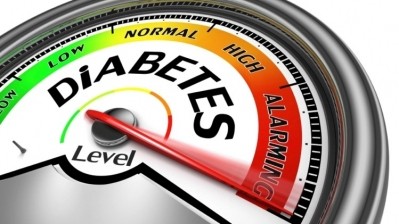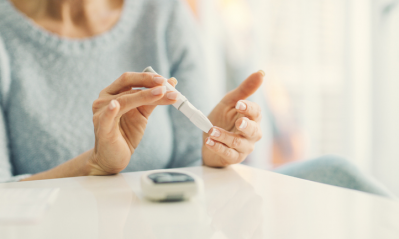Omega-3 could help achieve desirable levels of blood sugar among diabetics – China study

Pharmacokinetics examines how drugs interact with the body, while pharmacodynamics focuses on the effects drugs have within the body.
Their findings indicated that as the intake of omega-3 fatty acids increased, there was a dose-dependent decrease in HbA1c levels. HbA1c is the average blood glucose levels for the last two to three months.
“This study found that the effect of omega-3 PUFA on HbA1c was influenced by HDL. In patients with lower HDL, the clearance of omega-3 PUFA was accelerated, and the efficacy of reducing HbA1c was correspondingly diminished,” wrote the researchers in Nutrition & Diabetes.
Omega-3 PUFA is a key factor in the management of type 2 diabetes, but recommendations for dietary consumption of omega-3 PUFA for type 2 diabetics remain ambiguous and controversial.
Therefore, researchers conducted further investigations using PPK-PD modelling so that a threshold for omega-3 PUFA intake can be proposed.
Between 2021 to 2022, 161 patients with type 2 diabetes were selected from Fuzhou, China. They were all at least 18 years old and on regular diets.
Prior to drawing their blood samples, the participants were told to abstain from food, smoking and drugs for 12 hours. They also listed the average consumption frequency of various foods for the previous year.
Then, their plasma levels were measured. Plasma levels are determined by pharmacokinetics, which includes the dose and timing of dosage and the duration of absorption of drugs.
The nonlinear mixed effect analysis was used to construct a PPK-PD model for how omega-3 PUFA is processed in the body, and to quantify the effects of variables such as liver and kidney function, age and weight.
To establish the recommended intake of omega-3 PUFA for different HbA1c levels, various dosing simulations based on the PPK-PD model were performed.
The researchers tested this model on a group of 49 patients with type 2 diabetes to see if it accurately predicts omega-3 PUFA levels in their blood compared to actual measurements.
They found that the effect of omega-3 PUFA in type 2 diabetes patients depends on the amount ingested. Given sufficiently higher doses, the HbA1c-lowering effect of omega-3 PUFA is enhanced.
“This study found that the effect of omega-3 PUFA on HbA1c was influenced by HDL. In patients with lower HDL, the clearance of omega-3 PUFA was accelerated, and the efficacy of reducing HbA1c was correspondingly diminished,” said the researchers.
“A daily intake of omega-3 PUFA at 0.4 g was sufficient to achieve HbA1c level of 7% (56.9 mmol/mol) in more than 95% of patients. However, if the control target for HbA1c is 6.5% (51.5 mmol/mol), a daily intake of 1.3 g omega-3 PUFA would result in 90.08% of patients reaching the target. As can be seen, patients requiring strict control of HbA1c are expected to have a higher intake of omega-3 PUFA,” the researchers concluded.
However, there are limitations of this study. This is a single-centre investigation that has not been validated by other centres. Secondly, variations of living conditions and dietary habits in different regions may have led to deviations. Lastly, the association between high doses of omega-3 PUFA and the risk of adverse events needs to be observed in a larger population.
“Therefore, multi-centre studies with larger sample sizes and longer periods are still expected for further validation to provide more scientific evidence,” said the researchers.
Source: Nutrition & Diabetes
DOI: 10.1038/s41387-024-00262-w
“New light on ω-3 polyunsaturated fatty acids and diabetes debate: a population pharmacokinetic-pharmacodynamic modelling and intake threshold study”
Authors: Ling Wang, Xiaomin Huang et al.
We will be taking a closer look at Clinical Nutrition in our Growth Asia Summit 2024 this coming July, which will feature insights from a wide range of industry leaders and experts. Don't miss out – register here today!

















